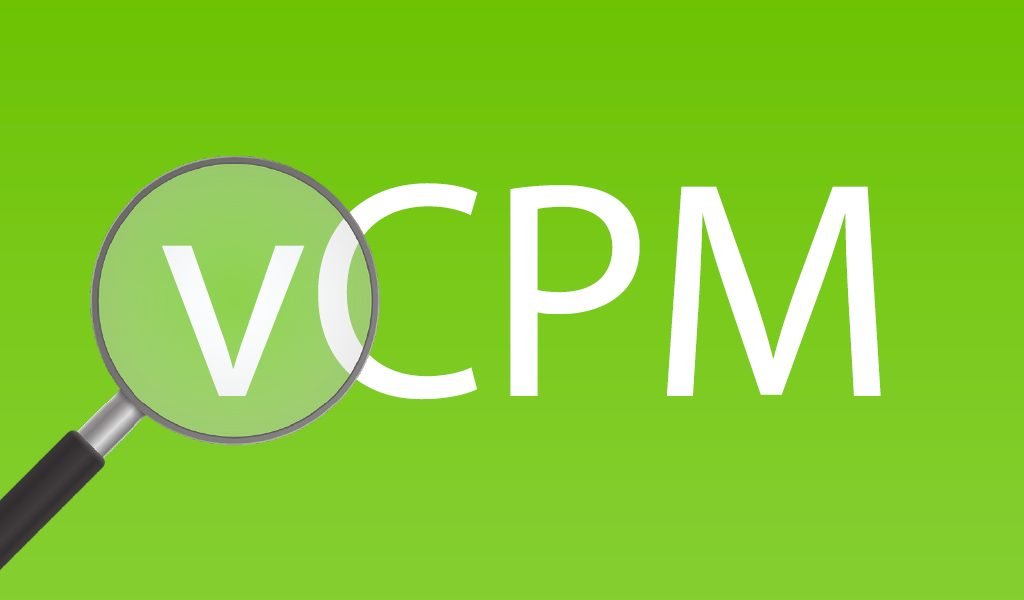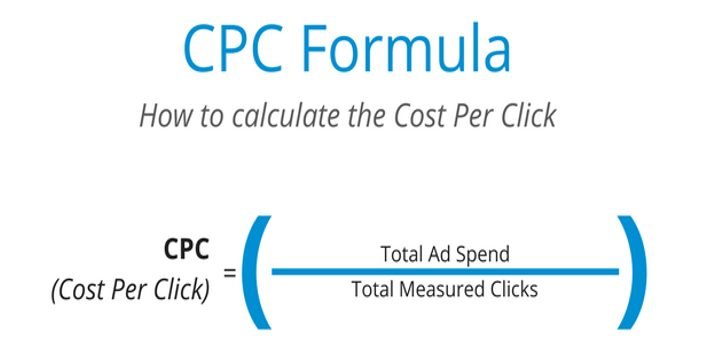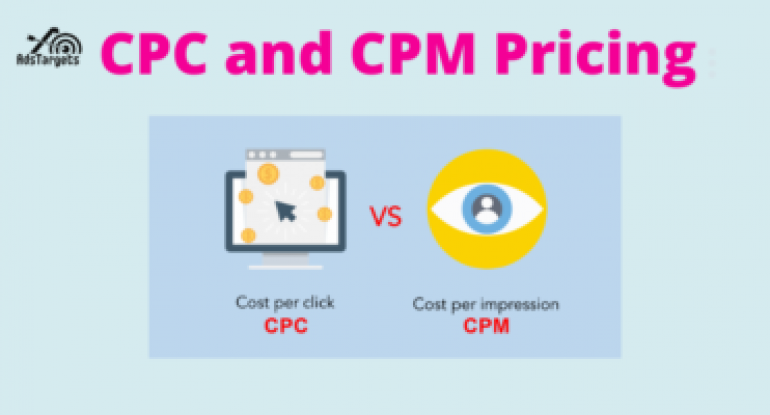Updated 09/04/2025
In the world of performance marketing, there are different ways to buy media (CPC and CPM, CPA, CPL, etc.) and it is essential to have clear ideas on the various types of ads pricing in order to better think about the planning criteria, optimizing the budgets to be allocated and measuring the ROI.
Today, advertising platforms, such as Facebook and Google, allow each advertiser to choose the way to buy advertising and “offer” their products, within the platform itself.
The two main possibilities available are: CPC and CPM pricing.
But which of these possibilities is more convenient to choose? What are the variables that can determine one choice rather than another? Are there alternatives to these opportunities?
In this post, we will try to answer these questions and analyze the meaning of CPC and CPM pricing, the most used terminologies for the purchase of a media.

Table of Contents
ToggleWhat is CPM
CPM is simply the cost per impression meaning cost per thousand (acronym: CPM) is a metric used to estimate the cost of an advertising campaign per thousand views of the same campaign.
This indicator is determined by multiplying by a thousand the ratio between the cost of the campaign and the number of contacts reached.
The cost per thousand metric, however, should not be confused with Cost per impression (CPI).
In “Marketing metrics: the definitive guide to measuring marketing performance” there is a substantial difference between the two metrics and it emerges that with CPI you indicate the cost that the advertiser will incur for each potential customer who will display the ad, while with CPM you indicate the cost that the advertiser will incur for every thousand potential customers who will display the ad.

The campaigns that are rewarded to CPM usually aim at brand awareness, as there is no direct link with the traffic they can generate but with the number of times a message is displayed.
It should be remembered that impressions are counted every time the page (on which the banner is hosted) is loaded, so it is not said that the user has actually displayed the message especially if the banner is in a position not easily visible (eg: very long pages and banners near the footer).
Offer for visible impressions using visible CPM
If the goal of your campaign is to increase brand awareness without necessarily increasing traffic to your website, the solution proposed by Google is to use vCPM offers.
This type of manual offer allows you to set the maximum amount that you are willing to pay for a thousand visible impressions of the ad and is used if your strategy involves giving priority to impressions.
In fact if you want to pay only for the impressions of the ads measured as visible, you can use the VISIBLE CPM (cost per thousand impressions).
An announcement is counted as “visible” when 50% of the announcement is displayed on the screen for 1 second or more (in the case of display announcements) or is played continuously for 2 seconds or more (in the case of video announcements).
You can select the visible CPM offer strategy when you choose the CPM-based offer for a “Display Network Only” campaign.

Visible CPM allows you to bid on the actual value of your ad that appears in a visible position in a given position.
Keep in mind that using a higher vCPM offer than the CPM offer is generally more effective in achieving these types of more profitable impressions.
This can help you keep your offers competitive and continue to meet your average daily budget.
So the advantages of vCPM are:
- You only pay for impressions measured as visible;
- Your offers are optimized to favour the ad areas that are most likely to become visible.
What is CPC or Advertising CPC
One of the metrics to assess the effectiveness of search advertising and display advertising campaigns is the cost per click (CPC).
The cost per click (CPC) (advertising CPC) is a metric used in pay per click (PPC) campaigns to indicate the average cost needed to get a click on the ad.
The value of a click can be variable depending on factors such as ad extensions, overall campaign optimization and quality score.
The latter, known as the Quality Score, is the system Google uses to reward advertisers who offer users the best experience on the target page and create a relevant ad. Its value is reported on a scale from 1 to 10.

As with other online advertising campaign evaluation metrics, the cost per click is measured as a ratio between two values which in this case are the cost of the campaign and the number of clicks generated by it.
The cost of a single click can vary, so the value referred to is an average value.
If we assume that the published ad receives three clicks, one at a cost of 0.40 € and the other two at a cost of 0.50 €, the total cost of the campaign is 1.40 €.
The cost per click of this campaign is 0.46 € and is obtained by dividing the total cost of 1.40 € by the total number of clicks which is three.
Different types of CPC values in Google campaigns
In a Google campaign, the CPC can be variable and there are several values referred to, such as the cost per actual click, the optimized cost per click or the maximum cost per click:
- Cost per actual click: The actual cost per click is the final amount that is charged to the advertiser for one click.
- Its value can stay below the maximum cost per click thanks to the auction system that regulates Google Ads or above this if optimized CPC or bidding adjustment is activated.
- Cost per click optimized (CPCO): The optimized cost per click is the CPC value obtained through the automatic adjustment of manual offers in order to get more conversions.
- Cost per click maximum: The maximum cost per click is the maximum amount you decide to set for one click on your ad.
CPC AND CPM PRICING: What to Choose
At this point, we can analyze all the advantages and disadvantages of both the most convenient bidding methods to use for the purchase of advertising, i.e. CPC and CPM.
In fact, we want to try to understand which is the best choice for your advertising needs.
#1. CPM is most useful to stimulate awareness and brand engagement and display ads which might interest yours to know your average CPM for display ads.
That’s what you need to do when you’re trying to create brand visibility. But the main drawback of CPM is that you may not get a single click on your website.
The problem is that you pay the full price for the campaign, regardless of the results, and often, you pay for impressions that nobody sees.
Brand awareness CPM also may vary from industry and location which you should be aware of when running your CPM Ads.
#2. CPC is more useful to stimulate conversions, whether they come from website visits or sales.
With CPC there are fewer impressions, but ads are much more personalized and targeted, and you only pay when a user clicks on those ads.
Whoever clicks shows great interest in what the ad has to sell. On CPC, however, you need to be very careful with the target audience because we could generate a lot of clicks but they are useless because the audience has not been carefully selected.

At least in terms of costs based on performance, CPC and CPM could be equivalent if you have a sufficiently large budget.
However, the available budget is often too small, so it is preferable to use a small part of it to perform an initial test and to orientate yourself on the payment method to choose.
In short, it depends a lot on the client’s needs, the budget available, the goal to be achieved and past experience.
By analyzing all these elements, you can choose which between CPC and CPM, best suits your context.
Conclusions
In this article, you have had the opportunity to understand the meaning of two important methods for the purchase of advertising: CPC and CPM. And we also have seen how to calculate both of them.
As you have noticed, there is much difference between CPC and CPM, and your choice has to depend from your needs, budget, aims and past results.
So our advice is to analyze all these items and make some tests, to understand which methods fits more with you.
We hope this article about CPC and CPM has been helpful to you. You are always welcome back and visit us anytime!
See you soon!








